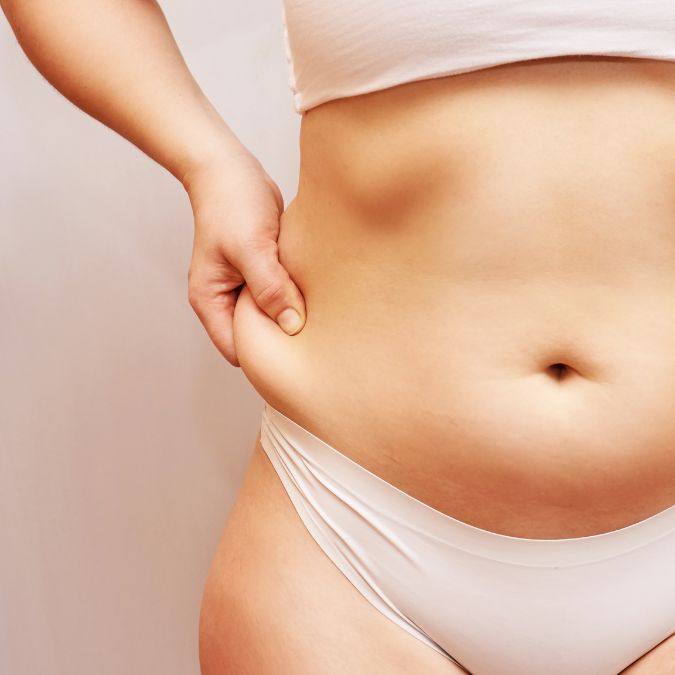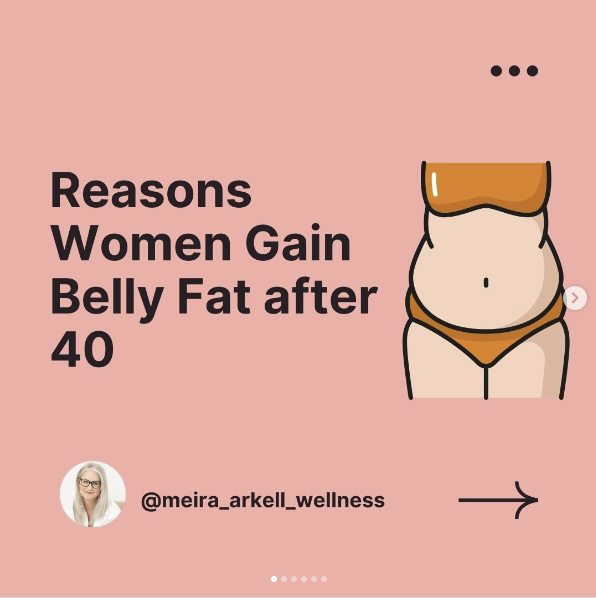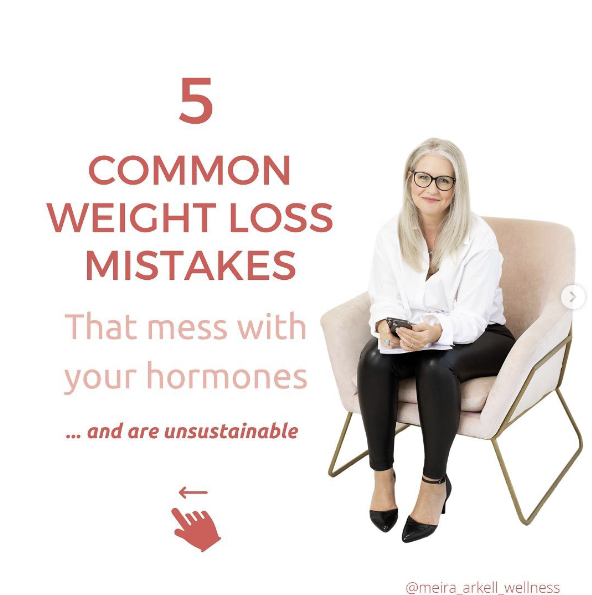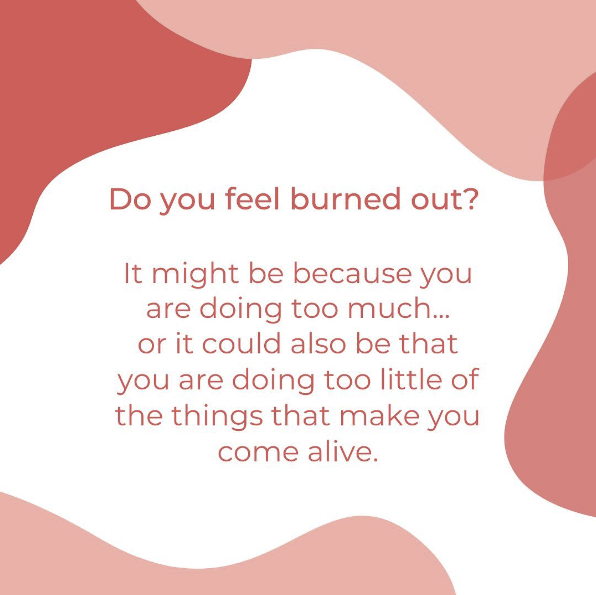I was chatting with the ladies in my BodyWISE online program recently and they asked me why women tend to gain so much weight around their waist as they get older.
It’s probably one of the number one struggles of women over 40… this constant additional “padding” around the waist, despite feeling like you eat pretty well. It’s super frustrating isn’t it?
I always want to shine light on the reasons why things are happening to our bodies.
The thing is, this belly weight gain is a combination of natural processes that are happening as you head towards and move through menopause, and lifestyle factors – like what and when you eat and your lifestyle (environmental health, stress, movement, sleep).
You can’t help the natural processes but you can hack them to some extent and really offset this natural movement towards belly weight gain.
First let’s understand what’s going on from a physiological standpoint:
1. Fat Distribution Shifts As We Age
In our teens, 20s and 30s, fat tends to accumulate on our hips and thighs. After 40, as as we approach menopause, fat tends to accumulate on the abdomen. This is due to the decline in estrogen.
2. Metabolism Slows Down
As we age, especially after 40, our Basal Metabolic Rate declines. This is the rate at which be burn calories at rest. This decline, coupled with estrogen deficiency, leads to more pronounced abdominal fat.
3. Decrease in Lean Body Mass
As we age, our lean body mass decreases (basically we lose muscle). Declining estrogen is implicated In this process. The more muscle you have, the higher your basal metabolic rate. Therefore, losing muscle further lowers your basel metabolic rate, making your metabolism slow and fat accumulation much more likely.
4. Lifestyle Factors
- Stress
- Skipping meals
- High consumption of refined carbohydrates
- High consumption processed food
- Low protein intake
- Lack of sleep
All of these factors contribute to additional belly fat in the perimenopausal and menopausal years.
But What Can You Do?
What can you do about this seemingly runaway train that seems to get worse and worse?
Well, it turns out there are in fact things you can do that don’t involve starving yourself and endless hours of cardio (those don’t work by the way).
You want to focus on the lifestyle factors I pointed out above. These will help you “hack” your physiology and stop the weight gain.
Here are some Tips:
1. Accept were you are in life and make some peace with your changing body. Almost all women struggle with this.
2. Begin to build some real muscle. As you can see from the slides above, we lose muscle mass and our basal metabolic rate is slowing down so we want to mitigate these processes with building our muscle mass back up. Weight training is your friend. This is the most effective way to increase your metabolism. Cardio will not do this for you.
3. Get Your Lifestyle and Nutrition On Point
– eat 3 balanced meals daily (coffee is not breakfast) – they should each include protein, fat and fibre
– get your protein consumption way up (eating animal protein is really going to help)
– limit refined carbohydrates (bread, pasta, muffins, cookies, pastries)
– actively address the stress in your life
– get a minimum of 7 hrs sleep
Aside from these recommendations, you might explore hormone replacement therapy using bio-identical hormones to fill in the missing pieces… but get your diet and lifestyle and nutrition on point first to maximize their effects.
Balancing your blood sugar and nervous system regulation are KEY to getting control of weight gain.
The good news is I’m a master at helping people balance their blood sugar. If you are frustrated with weight gain and are looking for some direction, book a free call with me and we can discuss some options!









